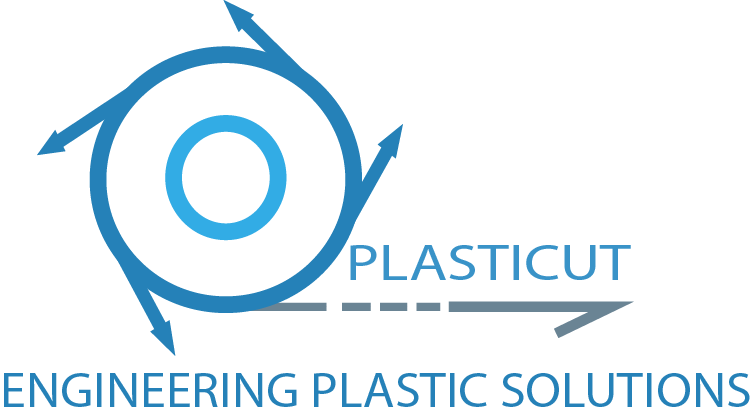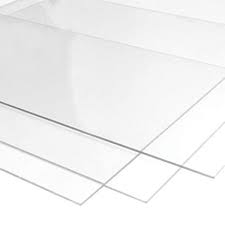Nylon and acrylic are two types of plastic that have a wide range of uses and functions. While they share some similar functions, their specific applications vary significantly. This article will examine the differences between these two plastic materials.
Nylon Plastic
Nylon is a remarkably hard-wearing, sturdy material used in many applications. It is very often used as a replacement material for aluminium, steel and other materials. Nylon plastic is best suited in situations when a material’s weight can be a concern as well as when either low amount of impact our no impact to the material is expected.
Nylon plastic sheets can be manufactured between 6.0 mm to 100 mm in thickness. Nylon rods can be produced in diameters between 50 mm on up to 300 mm. Machining nylon can be completed very efficiently and it is quite hard-wearing, making it an excellent choice for conveyor belts and rollers.
In technical terms, Nylon is a linear polyamide and synthetic thermoplastic that was originally created by Wallace Carothers in 1935. This original nylon is now known as Nylon-66 and is still one of the most popular types around. During World War II, as supply of natural materials like latex, silk and rubber steadily diminished, demand quickly rose for synthetic materials, including nylon.
Nylon is used in the production and repair of many tools and equipment. It is used in various applications including clothing, rope, to reinforce rubber based objects like vehicle tyres and as moulds for mechanical equipment. Nylon has a fair amount of resistance to chemicals, moisture absorption and abrasions. It is also strong, sturdy, elastic and easy to clean and maintain.
Acrylic Plastic
Acrylic plastic has a startlingly wide variety of applications across many industries. This material is made into rods and sheets, which can be cut to size to meet client requirements. Plastic suppliers and custom plastic fabricators prefer acrylic cut to size or perspex cut to size because it is transparent, lightweight and malleable. Custom-fabricated sneeze guards or plastic guards made with high-quality Acrylic.
Acrylic plastic is also commonly known as ‘Pexiglass’. This material is a thermoplastic homopolymer chemically known as Poly(methyl methacrylate) (PMMA). It can be used as a replacement material for glass in situations that don’t require high impact resistance. Acrylic was first produced in 1928 and introduced to the market in 1933. The first real-world applications of acrylic include aircraft canopies, windows, turret sight glasses and submarine periscopes.
Even today, acrylic is thought to be amongst the clearest of plastics available, with common applications for the plastic including acrylic nails, medical tools, furniture parts, security barriers, paint and LCD screens. Due to the high transparency and relatively moderate impact resistance of some acrylic versions, this plastic is also used for exhibit enclosures and windows.
Characteristics of Nylon and Acrylic Plastic
Nylon Characteristics
Nylon is a thermoplastic, meaning that it turns into a liquid once it reaches its melting point of 220 degrees celsius. Like other thermoplastics, nylon can be heated to melting point, allowed to cool and reheated again without any notable degradation of its underlying structure. Since nylon liquefies instead of burning at high temperatures, it is an ideal candidate for injection moulded processes and can be easily recycled afterwards. This material tends to be distilled from crude oil, but plastic manufacturers can create it from biomass as well. As it is configured from differing monomer types, Nylon is classified as a condensation copolymer.
Acrylic (PMMA) Characteristics
Acrylic is also a thermoplastic. It reacts to heat by liquefying once it reaches its melting point of 160 degrees. Similar to Nylon, it can be liquefied, cooled and reheated without significant compromise to its molecular integrity. This makes it another good choice for injection moulded processes and for later recycling.
Types of Nylon and Acrylic Plastic
Nylon Plastic Types
Though Nylon-6 was the first type of nylon produced, many variants have since come into existence around the globe. Many businesses manufacture their own versions of nylon – using their own customised formulations, industry names and manufacturing processes. The types of nylon that are considered common today are named Nylon-6, Nylon-66, Nylon-6/6 and Nylon-6/66.
The “6” mentioned indicates the amount of carbon atoms that are between the amine and acid groups of each nylon’s molecular structure. A single digit such as a “6” means the nylon was crafted from just one monomer that was designed to combine with itself – known as a homopolymer. “66” means the nylon was manufactured from several monomers designed to combine with one another, – known as a comonomer. “6/66” means the nylon was crafted from several comonomer groups that were designed to combine together – known as a copolymer.
The Variants of Acrylic (PMMA)
Acrylic acid was first invented in 1843. By 1933, its trade name “Plexiglas” (“Plexiglass” in international markets) had been patented by Otto Röhm, a German chemist. In the present age, a wide assortment of firms produce acrylic with their own particular formulas, trade names and production procedures. Some common trade names plastic suppliers use include Plexiglass, Acrylite, Perspex, Crylux and Lucite.
In conclusion, nylon and acrylic plastic have many diverse uses and functions. Nylon has many applications as engineering plastic for moving parts as it doesn’t require an external lubricant. Acrylic can provide the same advantages of typical Plexiglass while also being customised to meet other physical or chemical requirements. Plastic manufacturers can design and cut or die cut these plastics to serve many different industries, having applications in the fields of medicine, weaponry, aircrafts, security, nail care and many other fields.

